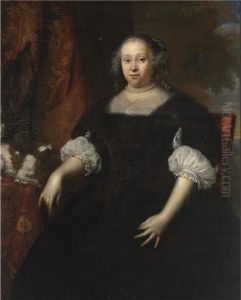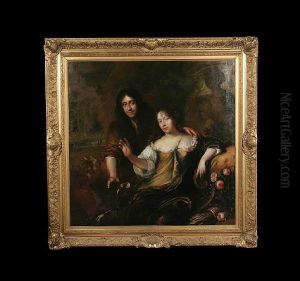Jan De Baen Haarlem Paintings
Jan de Baen was a Dutch portrait painter who was born in Haarlem in 1633. He is primarily known for his portrait paintings of the aristocracy and members of the Dutch patriciate, as well as for his works depicting various members of the House of Orange. His style was influenced by the prevalent Baroque aesthetics of the time, characterized by a keen attention to detail, a mastery of light and shadow, and a certain grandeur in portraying his subjects.
De Baen's early life is not thoroughly documented, but it is believed that he received his initial training from his uncle, Hals. He later moved to The Hague, which was a burgeoning center for Dutch portraiture due to the presence of the Dutch court. It was here that de Baen's career flourished. He became a member of the painters' confraternity, Confrerie Pictura, and eventually took over the studio of the renowned Dutch portraitist Adriaen Hanneman in 1677.
Throughout his career, Jan de Baen was commissioned by many high-ranking officials and members of the nobility. One of his most notable works is a series of portraits of the admirals and other naval officers who had distinguished themselves in the Anglo-Dutch Wars, capturing the heroic spirit of the Dutch Republic's Golden Age. He also painted 'The Corpses of the De Witt Brothers', a macabre work depicting the mutilated bodies of Johan and Cornelis de Witt, who were lynched by an angry mob in 1672.
De Baen's portraits are characterized by their elegance and vivacity, as well as by the rich fabrics and sumptuous settings that often accompany his sitters. He had a particular talent for rendering textures like silk and lace, which added to the opulence of his work. His ability to capture the likeness and personality of his subjects made him a sought-after portraitist during his time.
Despite his success, little is known about de Baen's personal life, and after his death in 1702, his fame waned until he was largely forgotten by the art world. However, art historians have since rediscovered his work, and he is now recognized as one of the important portrait painters of the Dutch Golden Age, with works housed in various museums and collections across the Netherlands and beyond.

